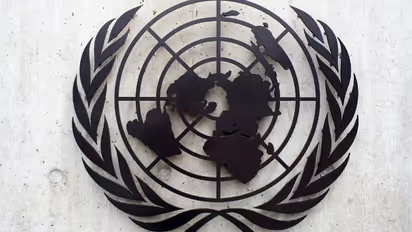
New Delhi: India climbed one spot to 130 among 189 countries in the latest human development index released Friday by the United Nations Development Programme. Within South Asia, India's human development index (HDI) value is above the average of 0.638 for the region, with Bangladesh and Pakistan, countries with similar population size, being ranked 136 and 150 respectively.
In 2016, India's HDI value of 0.624 put it at 131 rank.
The HDI is a summary measure for assessing long-term progress in three basic dimensions of human development: a long and healthy life, access to knowledge and a decent standard of living.
India's HDI value for 2017 is 0.640, which put the country in the medium human development category, according to the Human Development Report (HDR) released by the United Nations Development Programme (UNDP).
Courtesy: http://hdr.undp.org/en/2018-update
Between 1990 and 2017, India's HDI value increased from 0.427 to 0.640, an increase of nearly 50 per cent and an indicator of the country's remarkable achievement in lifting millions of people out of poverty, the report said.
Norway, Switzerland, Australia, Ireland and Germany led the ranking, while Niger, the Central African Republic, South Sudan, Chad and Burundi have the lowest scores in the HDI's measurement of national achievements in health, education and income.
The overall trend globally is toward continued human development improvements, with many countries moving up through the human development categories: out of the 189 countries for which the HDI is calculated, 59 countries are today in the very high human development group and only 38 countries fall in the low HDI group, it said.
Between 1990 and 2017, India's life expectancy at birth increased by nearly 11 years, with even more significant gains in expected years of schooling.
Today's Indian school-age children can expect to stay in school for 4.7 years longer than in 1990.
Whereas, India's gross national income per capita increased by a staggering 266.6% between 1990 and 2017.
About 26.8% of India's HDI value is lost on account of inequalities.
This confirms that inequality remains a challenge for India as it progresses economically, though the government and various state governments have, through a variety of social protection measures, attempted to ensure that the gains of economic development are shared widely and reach the farthest first.
In India, despite considerable progress at the policy and legislative levels, women remain significantly less politically, economically and socially empowered than men.
"For instance, women hold only 11.6% of parliamentary seats, and only 39% of adult women have reached at least a secondary level of education as compared to 64% males," the report said.
Female participation in the labour market is 27.25% compared to 78.8 for men, it said.
"Still, India performs better than its neighbours Bangladesh and Pakistan, ranking 127 out 160 countries on the Gender Inequality Index," the UNDP said.